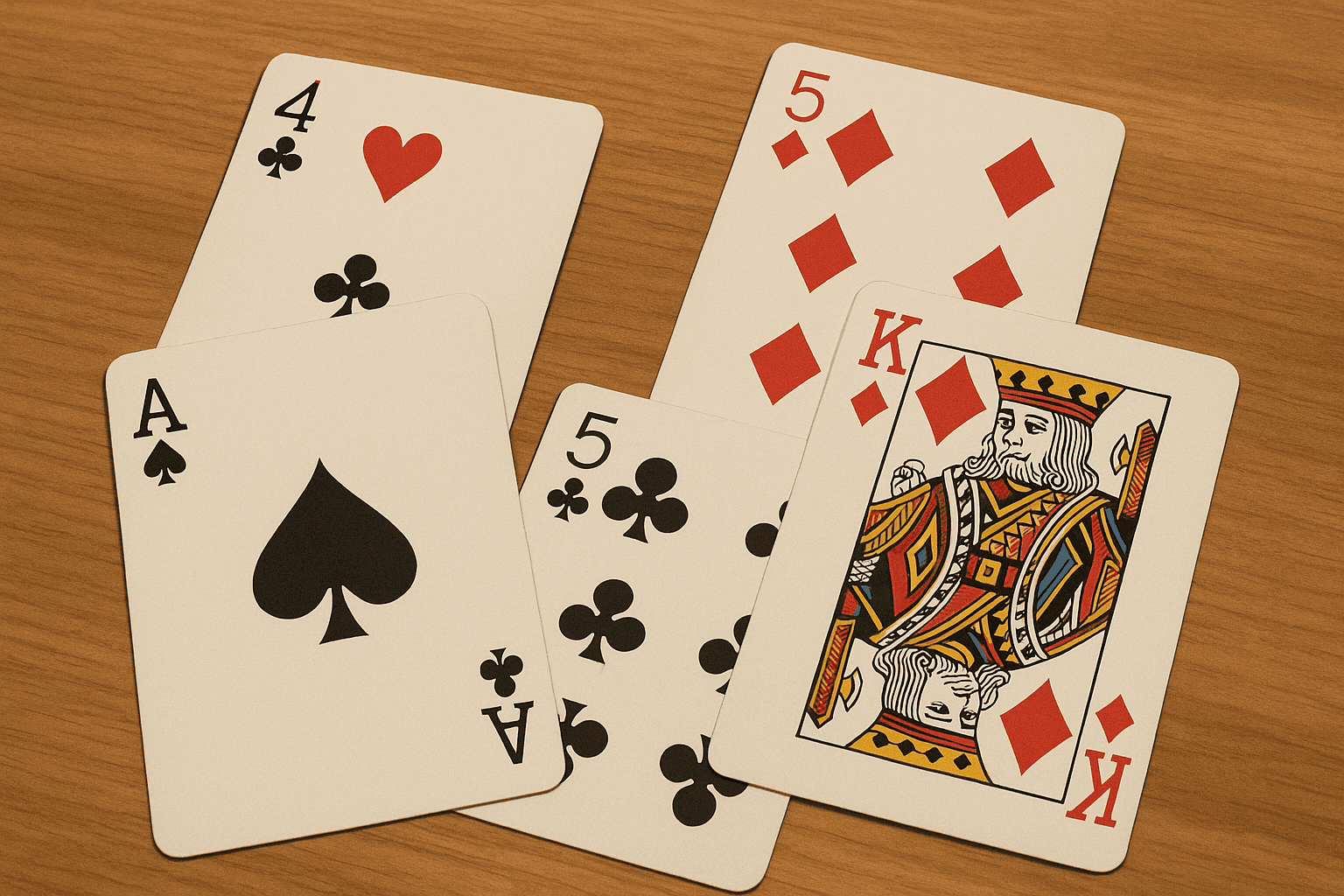
Symbols, Suits and Meaning – The Language of Cards
A deck of cards is more than a tool for gaming. It’s a pocket-sized record of human culture - an object that has carried meaning, symbolism and artistry for centuries. The four suits, the face cards and even the colors of red and black have evolved through time, blending myth, design and mathematics into a universal language. Each shuffle, draw and deal echoes hundreds of years of tradition. To see how this symbolism lives on in modern games, explore the many classics and variations in our card games section.
Created By Adam Davis Fernsby
The Origins of Card Symbols
The first playing cards are believed to have originated in China more than a thousand years ago, where paper money was used in early card-like games. From there, the concept spread through Persia and Egypt, eventually reaching Europe in the late 14th century. As cards traveled, their symbols evolved, absorbing the visual and social languages of each culture they passed through.
Early European decks often used four suits inspired by daily life and medieval society: cups, coins, swords and clubs - a structure that came from the Tarot tradition. Over time, as printing spread and regional variations formed, these evolved into the modern suits we know today: hearts, spades, diamonds and clubs.
The French were the first to popularize this standardized design, mainly because it was easy to reproduce with simple stencils. Their streamlined symbols - elegant and geometric - replaced earlier ornate illustrations and made mass production possible. The French suits eventually spread throughout Europe, becoming the basis for the international 52-card deck still used around the world.
The Meaning Behind the Four Suits
Each suit has its own symbolic weight, shaped by centuries of association and cultural adaptation. Though their meanings vary slightly across traditions, certain themes have endured:
- Hearts represent emotion, love, connection and the human spirit. They capture the essence of relationships and empathy - fitting for a symbol that beats with life.
- Spades are linked to intellect, challenge and power. The spade’s sharp point evokes conflict and authority, echoing the sword of the old Tarot suits.
- Diamonds symbolize wealth, material value and ambition. Their sparkle reflects prosperity and the pursuit of success.
- Clubs stand for action, growth and labor. Originally inspired by the farmer’s cudgel or staff, clubs represent hard work and vitality.
Historically, these suits also mirrored the four classes of medieval society: hearts for the clergy, spades for the nobility, diamonds for merchants and clubs for peasants. In this sense, every deck was a miniature reflection of social hierarchy - a simple yet profound metaphor for life’s balance between status, luck and effort.
The Numbers, Faces and Hierarchy of the Deck
Beyond the suits themselves, the numbers and face cards also carry symbolic meaning. The numbered cards (two through ten) reflect progression, order and probability — the predictable rhythm of daily life. The face cards, however, bring personality and hierarchy into the mix.
The King, Queen and Jack each tell a story of historical influence. The earliest European decks often depicted real rulers or mythological figures - Charlemagne, Judith, Alexander the Great. Over time, these faces lost their individual identities and became archetypes instead: the King as leadership, the Queen as grace and influence, the Jack as courage and unpredictability.
The Ace, today the most powerful card, was once the lowest. During the 17th century, when political revolutions challenged monarchy, the Ace rose in status, becoming a symbol of rebellion and independence. That shift turned it into a universal emblem of luck and possibility - a reminder that even the smallest card can change the game.
Color, Design and Cultural Variation
The contrast of red and black in a modern deck is not just for visibility. It represents balance — passion and caution, warmth and logic, chaos and order. Red suits (hearts and diamonds) traditionally express life, emotion and fortune, while black suits (spades and clubs) bring a sense of formality, focus and challenge.
Different regions developed their own artistic interpretations.
- German decks used acorns, leaves, hearts and bells - rustic symbols connected to nature and everyday life.
- Italian and Spanish decks kept the older suits of cups, coins, swords and clubs, echoing the classical Tarot tradition.
- French decks, with their clean, geometric icons, became the global standard thanks to ease of production and trade.
Even today, artists and designers continue to reinvent these symbols. Minimalist decks remove borders and embellishments, focusing on shape and color. Collector’s editions reimagine the suits through pop culture or fantasy themes. And digital card games adapt the same four symbols into new visual languages - proof that the aesthetic power of the deck remains timeless.
The Universal Language of Cards
Why have these symbols endured for so long? Perhaps because they speak to something universal in human life - the balance between logic and luck, order and chance. Each card in a deck represents both structure and mystery. The suits mirror the forces we navigate every day: emotion, ambition, intellect and effort.
Despite centuries of technological change, the playing card remains a perfect design - compact, versatile and instantly recognizable. It can entertain, teach, deceive, or inspire, depending on the game and the player. When someone shuffles a deck, they’re not just preparing for play; they’re touching a piece of living history that connects people across continents and generations.
So the next time you sit down to play, take a closer look at the hearts, spades, diamonds and clubs in your hand. Their shapes and colors tell a story older than any one game - a story written in symbols that continue to speak the language of chance, connection and imagination.